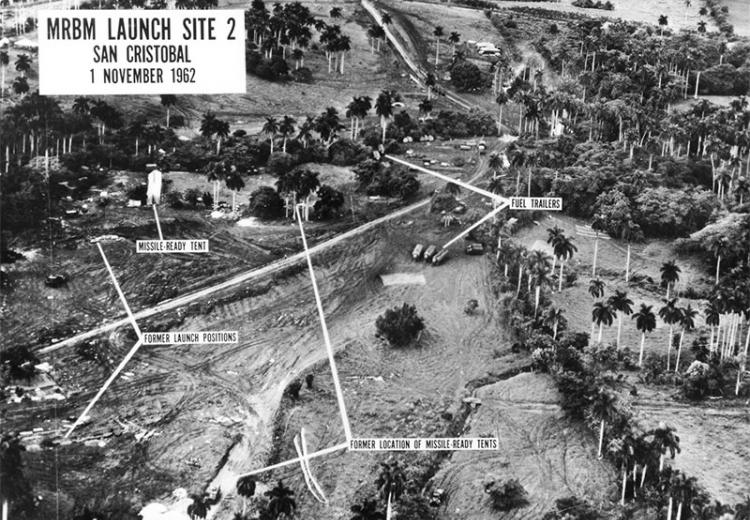The Cuban Missile Crisis, 1962: The Missiles of October

U.S. reconnaissance photograph of soviet missile sites on Cuba, taken from a Lockheed U-2 spy plane following the Cuban missile crisis.
Most historians agree that the world has never come closer to nuclear war than it did during a thirteen-day period in October 1962, after the revelation that the Soviet Union had stationed several medium-range ballistic missiles in Cuba. This lesson will examine how this crisis developed, how the Kennedy administration chose to respond, and how the situation was ultimately resolved. By examining both government documents and photographs students will put themselves into the role of President Kennedy during this crucial period, considering the advice of key administration figures and deciding on a course of action.
Guiding Questions
Why did the Soviet Union place missiles in Cuba?
What were the short and long term consequences of the Cuban Missile Crisis?
Learning Objectives
Evaluate the Soviet Union's justification for placing missiles in Cuba.
Analyze the competing perspectives within the U.S. and the Soviet Union regarding how to respond to the threat in Cuba.
Evaluate President Kennedy's decision to "quarantine" Cuba and compare it to other Cold War era policies.
Analyze the correspondence and diplomatic maneuvers used by the U.S. and Soviet Union.
Evaluate the short and long term consequences of the Cuban Missile Crisis.
